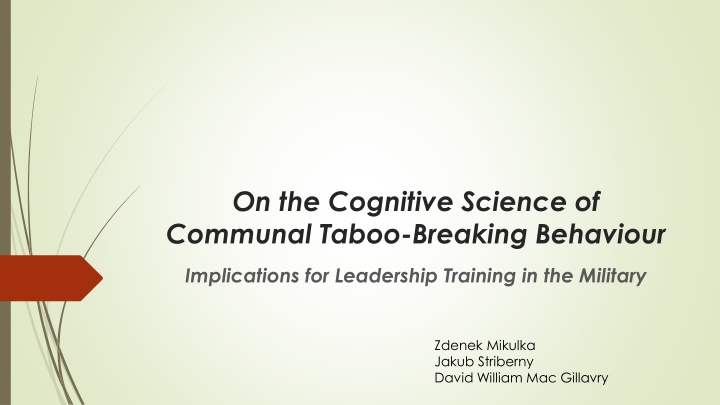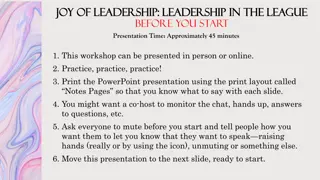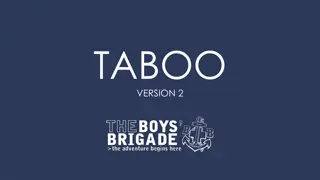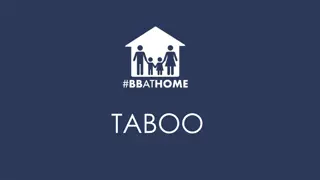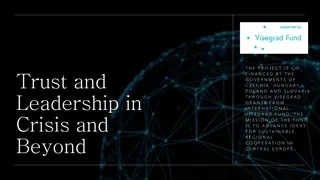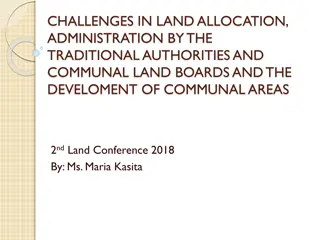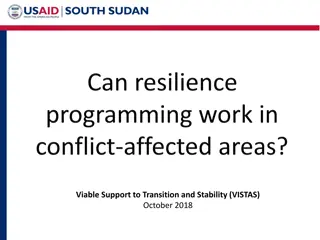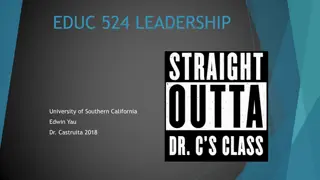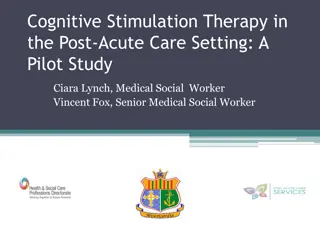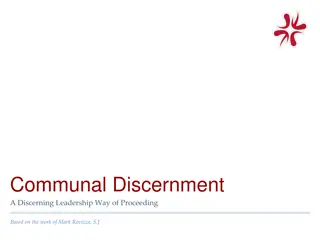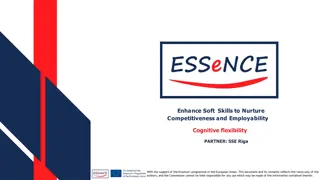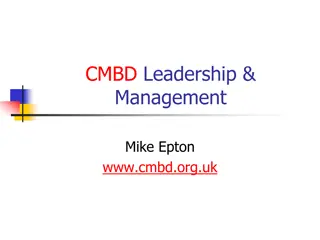Cognitive Science of Communal Taboo-Breaking in Leadership
In this paper, an examination of communal taboo-breaking behavior and its implications for leadership training in the military is presented. The discussion delves into concepts such as extraordinary evil, cultural perceptions of perpetrators, and the role of socio-political contexts in understanding cruelty. The analysis emphasizes the innate ability of humans to harm others under specific conditions, often influenced by institutional endorsement and in-group dynamics. Furthermore, the paper argues that the act of inflicting harm on others reflects a universal tendency rooted in human social cognition, potentially representing a dysfunctional expression of an otherwise adaptive trait. The significance of transgression, secrecy, and communication dynamics in shaping social behaviors is also explored.
Download Presentation

Please find below an Image/Link to download the presentation.
The content on the website is provided AS IS for your information and personal use only. It may not be sold, licensed, or shared on other websites without obtaining consent from the author.If you encounter any issues during the download, it is possible that the publisher has removed the file from their server.
You are allowed to download the files provided on this website for personal or commercial use, subject to the condition that they are used lawfully. All files are the property of their respective owners.
The content on the website is provided AS IS for your information and personal use only. It may not be sold, licensed, or shared on other websites without obtaining consent from the author.
E N D
Presentation Transcript
On the Cognitive Science of Communal Taboo-Breaking Behaviour Implications for Leadership Training in the Military Zdenek Mikulka Jakub Striberny David William Mac Gillavry
Extraordinary evil as a cultural concept that is not very helpful Perpetrators as different from ourselves Few bad apples (in case of in-group members Indicative of the other (in case of out-group members) Waller, James. Becoming Evil: How Ordinary People Commit Genocide and Mass Killing. Jama 300, no. 6 (2008): 737. https://doi.org/10.1001/jama.300.6.737.
Extraordinary cruelty as a function of the socio-political context Ordinary people Ordinary means For ordinary reasons Commonly under extraordinary circumstances Arendt, Hannah. Eichmann in Jerusalem: A Report on the Banality of Evil. Penguin Books, 2006.
The two premises at the underlie a socio-political explanation The ability to inflict harm on others is innate to the human condition. This ability is only expressed under certain conditions. Institutional endorsement (i.e. the local power structure actively sanctions, supports or enables perpetrators in their actions). In-group dynamics lead to spontaneous eruptions of extremely transgressive behaviour
In this paper we argue that the communal act of inflicting harm on others constitutes a universal tendency in human social cognition and, thus, very likely, amounts to a dysfunctional expression of an otherwise adaptive trait. This trait, we suggest, is the social cognition of transgression and secrecy dynamics.
Transgression and secrecy as a social communication The transgression of social norms leads, inevitably, to information about the individual which would, if it were to fall in the wrong hands, have negative outcomes for the transgressor. This leads to concealment. Few secrets are kept for very long. A tendency for self-concealment is associated with negative mental health outcomes. We tend to distrust people who over-share, under-share, or never misbehave. Secrecy revelations constitute a mode of communication in and of itself. Venetis, Maria K., Kathryn Greene, Kate Magsamen-Conrad, Smita C. Banerjee, Maria G. Checton, and Zhanna Bagdasarov. You Can t Tell Anyone but : Exploring the Use of Privacy Rules and Revealing Behaviors. Communication Monographs 79, no. 3 (2012): 344 65. https://doi.org/10.1080/03637751.2012.697628. Mac Gillavry, David William. Rethinking Secrecy in Religion Cognition and the Intimacy of Secrecy. Method and Theory in the Study of Religion. Brill Academic Publishers, 2018. https://doi.org/10.1163/15700682-12341430. Rodriguez, Noelie, and Alan L. Ryave. The Structural Organization and Micropolitics of Everyday Secret Telling Interactions. Qualitative Sociology 15, no. 3 (1992): 297 318. https://doi.org/10.1007/BF00990330.
Content of concealed information Self-concealment Secrets Large, socially unforgivable transgressions Minor transgressions Information that provides an economic or social advantage Trauma Family matters Illness Mac Gillavry, David William. Rethinking Secrecy in Religion Cognition and the Intimacy of Secrecy. Method and Theory in the Study of Religion. Brill Academic Publishers, 2018. https://doi.org/10.1163/15700682-12341430.
Secrecy communications The revealer makes the receiver either implicitly or explicitly aware of their intent to communicate secret information The receiver either accepts to receive the information or not If the accept, they are then expected to retain secrecy and to refrain from judging the revealer on the basis of the received information In consequence, both parties exchange social capital (trust and understanding) and thus enter into a social contract .
Communal transgression Secrecy is retained on behalf of all in-group members. Pressure to ensure secrecy for the better of the group requires all to engage to s similar extent. It is often hard to quantify or replicate most transgressions, which can lead to an acceleration of transgressive acts.
This theory predicts That perpetrators know that what they are doing is wrong That they often feel remorse afterwards That communal transgression leads to bonding amongst perpetrators That perpetrators to not view themselves as bad people and often dissociate from the events.
What can we do Bystander effect Strong and involved leadership The conceptual space to question group behaviour A strong focus on autonomous decision making
